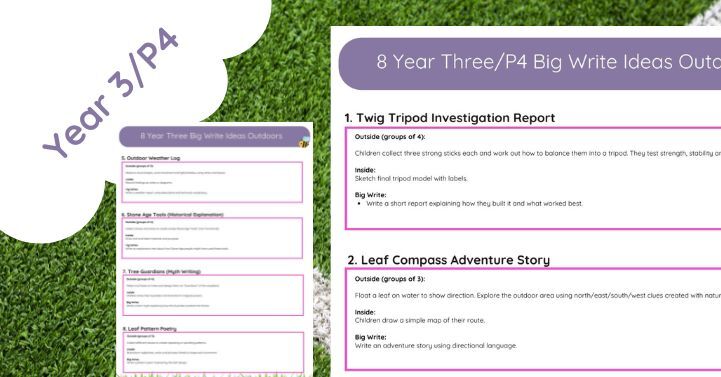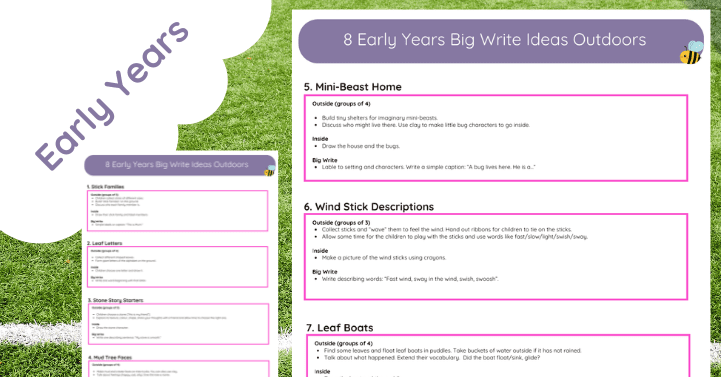5 Outdoor Sensory Gym Ideas
Bring the excitement of sensory exploration to the great outdoors with our “5 Outdoor Sensory Gym Ideas” set! Specially designed to engage and stimulate young minds and bodies, this set includes five unique sensory activities that encourage physical play, motor skills, and sensory processing. Perfect for schools, therapy centres, or backyard play spaces, each station offers a unique experience that invites children to explore textures, sounds, balance, and movement in a safe, nature-inspired environment.
The Benefits of Taking Sensory Gyms Outdoors
In recent years, sensory gyms have become a key resource for supporting children with sensory processing needs, providing spaces where they can improve motor skills, balance, and sensory regulation. But a growing trend is taking these benefits to the next level – moving sensory gyms outdoors. From boosting physical health to improving mental well-being, taking sensory gyms outside allows children to connect with nature while enhancing sensory learning in dynamic, fresh-air environments.
Here’s a closer look at the advantages of outdoor sensory gyms and why they’re an ideal solution for children’s development.
1. Enhanced Physical Exercise and Motor Skills
Outdoor sensory gyms naturally incorporate more physical movement, allowing children to engage in activities that strengthen core muscles and improve coordination. They have room to run, jump, and play in an open environment. Studies have shown that outdoor physical activity source improves cardiovascular health and motor skills. Activities like climbing, balancing on natural logs, or walking on uneven terrain challenge and refine children’s gross motor abilities.
2. Improved Sensory Processing and Regulation
Nature provides a rich variety of sensory inputs. For instance, stepping on grass, sand, or pebbles offers different tactile sensations, while birds or rustling leaves stimulate the auditory senses. Research indicates that nature-based sensory experiences source help children develop better sensory regulation, a critical skill for managing sensory inputs and responding to environmental changes.
3. Reduction in Stress and Anxiety
Natural environments have a calming effect on the body. Exposure to green spaces is associated with reduced levels of stress and anxiety in children source. Activities like swinging in a hammock or walking through a sensory garden create a sense of peace, helping children to unwind and feel grounded. The calming sounds of nature also work as a natural form of white noise, aiding in relaxation.
4. Boosted Cognitive Development and Attention Span
Being outside can boost cognitive functions source, such as focus, problem-solving, and memory. Studies show that outdoor playtime can help improve children’s attention spans, especially in children with ADHD source. An outdoor sensory gym with activities that require focus and concentration, such as balancing or completing obstacle courses, enjoyably supports cognitive skill-building.
5. Enhanced Social Skills and Communication
Outdoor sensory gyms create an inclusive environment where children can play and interact with peers in a more relaxed setting. Social interaction outdoors source is often less structured and more creative, allowing kids to communicate, collaborate, and solve problems together. This can be particularly beneficial for children who find indoor group settings overwhelming.
6. Strengthening of the Immune System
Spending time outdoors exposes children to various environmental factors that help strengthen their immune systems source. Playing in dirt, touching natural materials, and being exposed to different weather conditions can all contribute to building immunity, helping children stay healthy in the long run.
7. Increased Exposure to Vitamin D
Natural sunlight is one of the best sources of vitamin D source, which is essential for bone health, immune support, and mood regulation. Outdoor sensory gyms provide children with regular exposure to sunlight, helping them get their daily dose of this vital nutrient while they play.
8. Stimulation of All Five Senses
Outdoor sensory gyms allow children to experience various sensory inputs, from tactile sensations of sand and mud to the visual appeal of bright flowers and natural landscapes. This multi-sensory stimulation source supports the development of sensory processing skills, helping children make sense of the world around them in a controlled yet immersive way.
9. Connection to Nature and Environmental Awareness
When children spend time outdoors, they naturally develop a greater appreciation for nature. Engaging in activities like gardening, exploring plants, or observing insects helps instil environmental awareness source. This connection to nature benefits sensory development and fosters a lifelong respect for the environment.
10. More Opportunities for Mindfulness and Reflection
Sensory experiences in nature encourage mindfulness source. A sensory garden, for example, allows children to focus on the present moment, touch different textures, and smell plants. These calming activities can help children with sensory processing disorders slow down and engage their senses in a peaceful, mindful way.
11. Opportunities for Imaginative and Creative Play
Outdoor settings encourage imaginative play source. Children are more likely to pretend and create their own games with natural elements like sticks, rocks, or sand. This type of play boosts creativity and helps them practice problem-solving and decision-making skills.
12. Engagement with a Variety of Natural Materials
Using natural materials such as wood, sand, rocks, and water introduces children to natural textures and element sources. Interacting with these materials helps children explore textures, weights, and temperatures, which enriches their sensory experiences and makes play more diverse.
13. Building Resilience and Independence
Outdoor environments can be unpredictable, with uneven ground, different weather, and changing light. These small challenges source encourage resilience, adaptability, and independence as children learn to navigate and overcome these variations while exploring their sensory surroundings.
14. Improved Sleep Patterns
Exposure to natural light during the day helps regulate children’s sleep-wake cycles, improving sleep quality and pattern source. This exposure to daylight promotes melatonin production, which helps children fall asleep faster and experience deeper, more restful sleep.
15. Fostering a Sense of Freedom and Joy
Finally, an outdoor sensory gym gives children a unique sense of freedom. They can explore at their own pace, breathe fresh air, and embrace the natural world around them. Many parents and therapists find that nature enhances joy and well-being source, making the experience fulfilling and beneficial.












